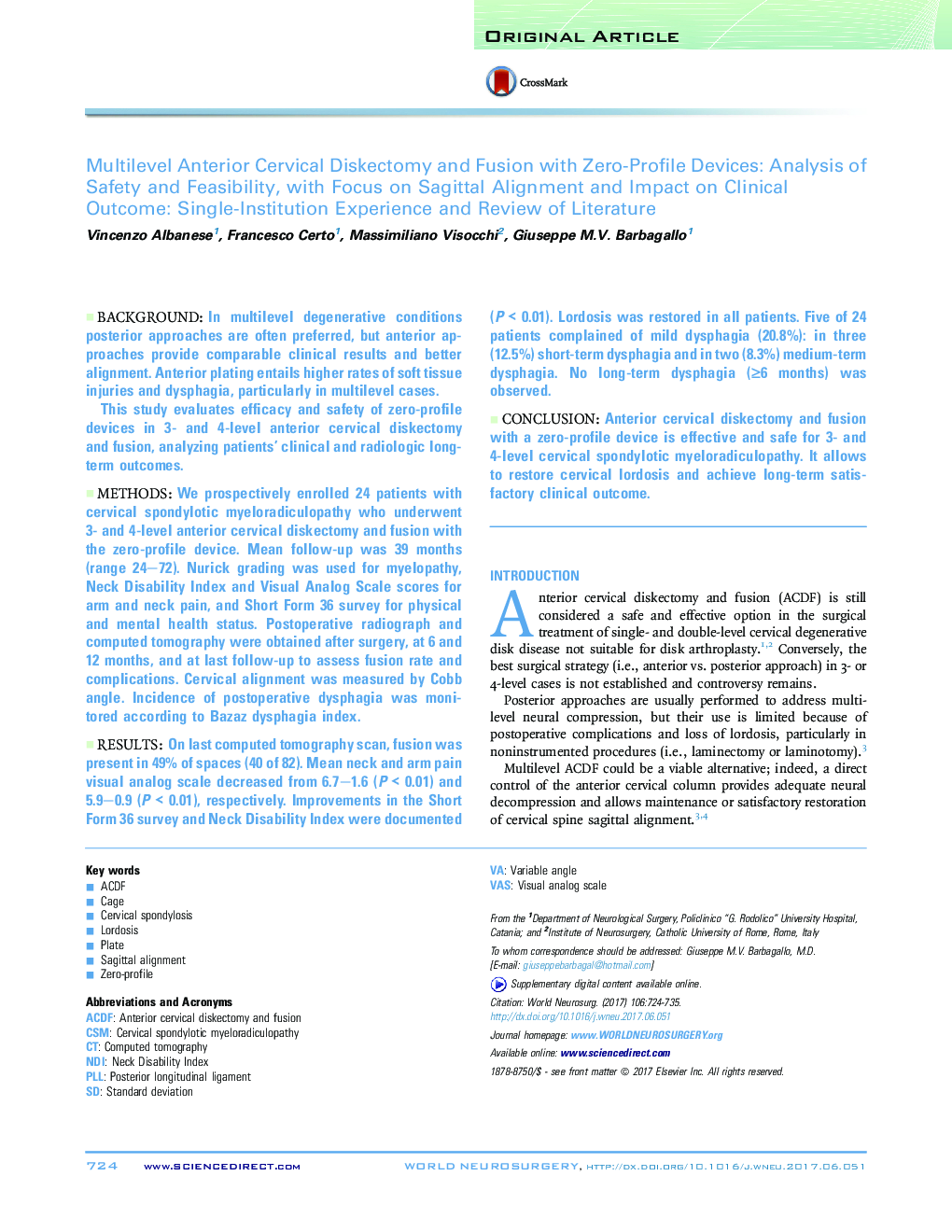| کد مقاله | کد نشریه | سال انتشار | مقاله انگلیسی | نسخه تمام متن |
|---|---|---|---|---|
| 5634034 | 1581449 | 2017 | 12 صفحه PDF | دانلود رایگان |
BackgroundIn multilevel degenerative conditions posterior approaches are often preferred, but anterior approaches provide comparable clinical results and better alignment. Anterior plating entails higher rates of soft tissue injuries and dysphagia, particularly in multilevel cases.This study evaluates efficacy and safety of zero-profile devices in 3- and 4-level anterior cervical diskectomy and fusion, analyzing patients' clinical and radiologic long-term outcomes.MethodsWe prospectively enrolled 24 patients with cervical spondylotic myeloradiculopathy who underwent 3- and 4-level anterior cervical diskectomy and fusion with the zero-profile device. Mean follow-up was 39 months (range 24-72). Nurick grading was used for myelopathy, Neck Disability Index and Visual Analog Scale scores for arm and neck pain, and Short Form 36 survey for physical and mental health status. Postoperative radiograph and computed tomography were obtained after surgery, at 6 and 12 months, and at last follow-up to assess fusion rate and complications. Cervical alignment was measured by Cobb angle. Incidence of postoperative dysphagia was monitored according to Bazaz dysphagia index.ResultsOn last computed tomography scan, fusion was present in 49% of spaces (40 of 82). Mean neck and arm pain visual analog scale decreased from 6.7-1.6 (P < 0.01) and 5.9-0.9 (P < 0.01), respectively. Improvements in the Short Form 36 survey and Neck Disability Index were documented (P < 0.01). Lordosis was restored in all patients. Five of 24 patients complained of mild dysphagia (20.8%): in three (12.5%) short-term dysphagia and in two (8.3%) medium-term dysphagia. No long-term dysphagia (â¥6 months) was observed.ConclusionAnterior cervical diskectomy and fusion with a zero-profile device is effective and safe for 3- and 4-level cervical spondylotic myeloradiculopathy. It allows to restore cervical lordosis and achieve long-term satisfactory clinical outcome.
Journal: World Neurosurgery - Volume 106, October 2017, Pages 724-735
